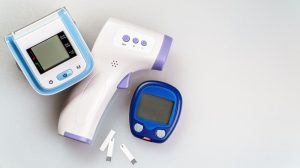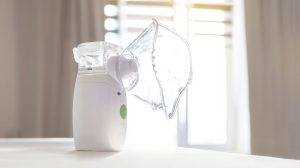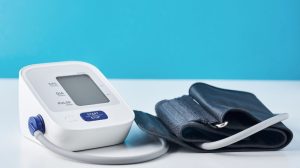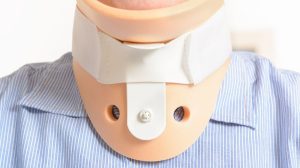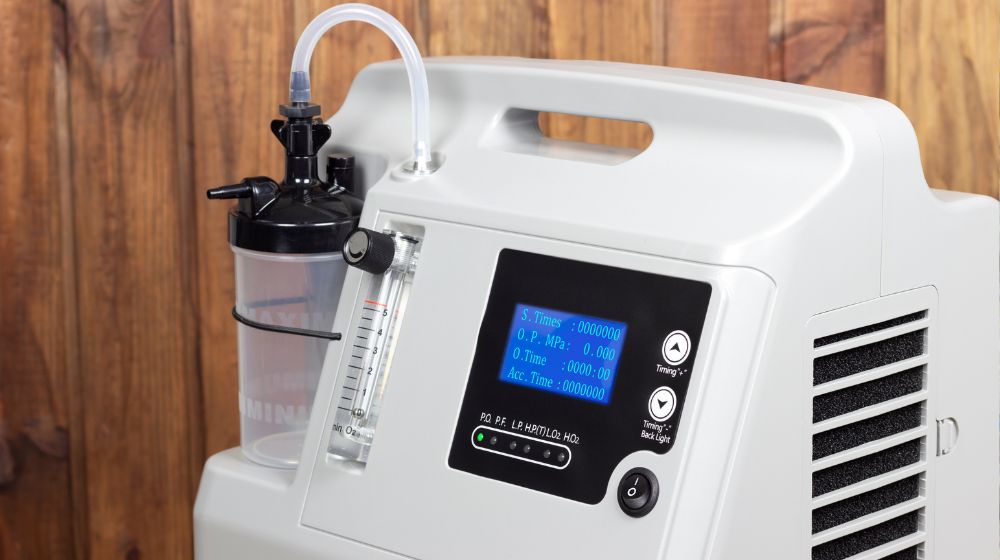
As the demand for home healthcare continues to rise, oxygen concentrators have become essential medical devices for patients with chronic respiratory issues, elderly individuals, and post-operative care. Whether it’s for managing COPD, asthma, or general oxygen therapy, selecting the right oxygen concentrator for home use is crucial for ensuring safety, comfort, and treatment effectiveness.
This guide will help you understand the key factors to consider when choosing a suitable oxygen concentrator for your home.
What Is A Home Oxygen Concentrator?
A home oxygen concentrator is a medical device that takes in ambient air and separates nitrogen from oxygen, providing a high-concentration oxygen supply to the user. Unlike oxygen tanks, concentrators do not require refills and can run continuously when plugged into a power source. These devices are commonly used for long-term oxygen therapy (LTOT) and offer a more convenient and cost-effective solution for home patients.
Who Needs A Home Oxygen Concentrator?
Oxygen concentrators are prescribed to patients diagnosed with conditions that result in low blood oxygen levels. These include:
- Chronic Obstructive Pulmonary Disease (COPD)
- Asthma
- Pulmonary fibrosis
- Sleep apnea (in some cases)
- Pneumonia
- COVID-19 recovery
- Heart failure
If you have been advised by a physician to undergo oxygen therapy at home, choosing the right machine becomes a critical decision.
Types of Home Oxygen Concentrators
Before making a purchase, it’s important to understand the two main types of oxygen concentrators for home use:
1. Stationary (Home) Oxygen Concentrators
These are designed to be used indoors and plugged into a wall outlet. They are generally larger and capable of delivering high oxygen flow rates (up to 10 LPM or more), making them suitable for patients who require continuous high-flow oxygen therapy.
2. Portable Oxygen Concentrators (POCs)
POCs are compact, lightweight devices that run on rechargeable batteries. While they offer mobility, they usually have a lower maximum flow rate and may not be suitable for patients who require high levels of oxygen for extended periods.
Key Features to Consider When Choosing A Home Oxygen Concentrator
When selecting an oxygen concentrator, there are several critical features to evaluate based on your specific medical needs and lifestyle:
1. Oxygen Flow Rate
The flow rate indicates how much oxygen the machine can deliver per minute, measured in liters per minute (LPM). Common options range from 1 to 5 LPM for standard models, with some high-capacity units going up to 10 LPM. Your doctor will prescribe a specific flow rate; ensure the concentrator you choose supports that level.
2. Oxygen Purity Level
A good home concentrator should deliver oxygen with a purity of 87% to 96%. Consistent purity is essential for effective therapy. Look for devices that maintain this purity across various flow settings.
3. Continuous Flow vs. Pulse Dose
- Continuous flow provides a steady stream of oxygen, ideal for patients who need oxygen even during sleep.
- Pulse dose delivers oxygen only when the user inhales, conserving power and oxygen supply, making it common in portable models.
For home use, continuous flow is often preferred unless otherwise advised by a doctor.
4. Noise Level
Because the machine may run continuously throughout the day or night, noise level is a major factor. Quieter units (under 40 dB) are more suitable for home environments, especially if used in a bedroom.
5. Size and Portability
While home models are generally stationary, some are more compact than others and can be moved around the house using wheels or handles. Consider your space and mobility needs before purchasing.
6. Power Consumption
As the unit will operate for long periods, energy efficiency can affect your electricity bill. Look for models that offer good performance with lower power usage.
7. Battery Backup and Alarms
Some advanced home concentrators come with built-in battery backups and safety alarms for low oxygen levels, system errors, or power failures—important features for patient safety.
Other Practical Considerations
Brand Reputation and Warranty
Choose a trusted medical equipment brand with good customer support and a clear warranty policy. Oxygen concentrators are significant investments, and after-sales service is critical.
Maintenance and Filter Replacement
Regular maintenance ensures optimal performance. Check whether the model requires frequent filter cleaning or replacement, and if the process is user-friendly.
Price and Insurance Coverage
Home oxygen concentrators vary in price, typically ranging from $600 to over $2000, depending on features and capacity. Check if your health insurance covers part of the cost or if rental options are available.
Cautions for Using a Home Oxygen Concentrator
Once you’ve chosen your device, follow these cautions to ensure safe and effective oxygen therapy:
- Always follow your doctor’s prescribed oxygen levels.
- Keep the unit in a well-ventilated space away from heat sources.
- Do not smoke near the concentrator.
- Clean filters and tubing regularly as per the manufacturer’s instructions.
- Schedule routine servicing to ensure the machine operates correctly.
Conclusion
Choosing the right oxygen concentrator for home use involves understanding your medical needs and balancing functionality, reliability, and cost. By considering factors such as flow rate, purity, noise level, and power usage, you can make an informed decision that ensures safety, comfort, and effective treatment.
Always consult with your healthcare provider before making any purchase. With the right oxygen concentrator, you or your loved one can enjoy improved quality of life and better health outcomes from the comfort of home.

